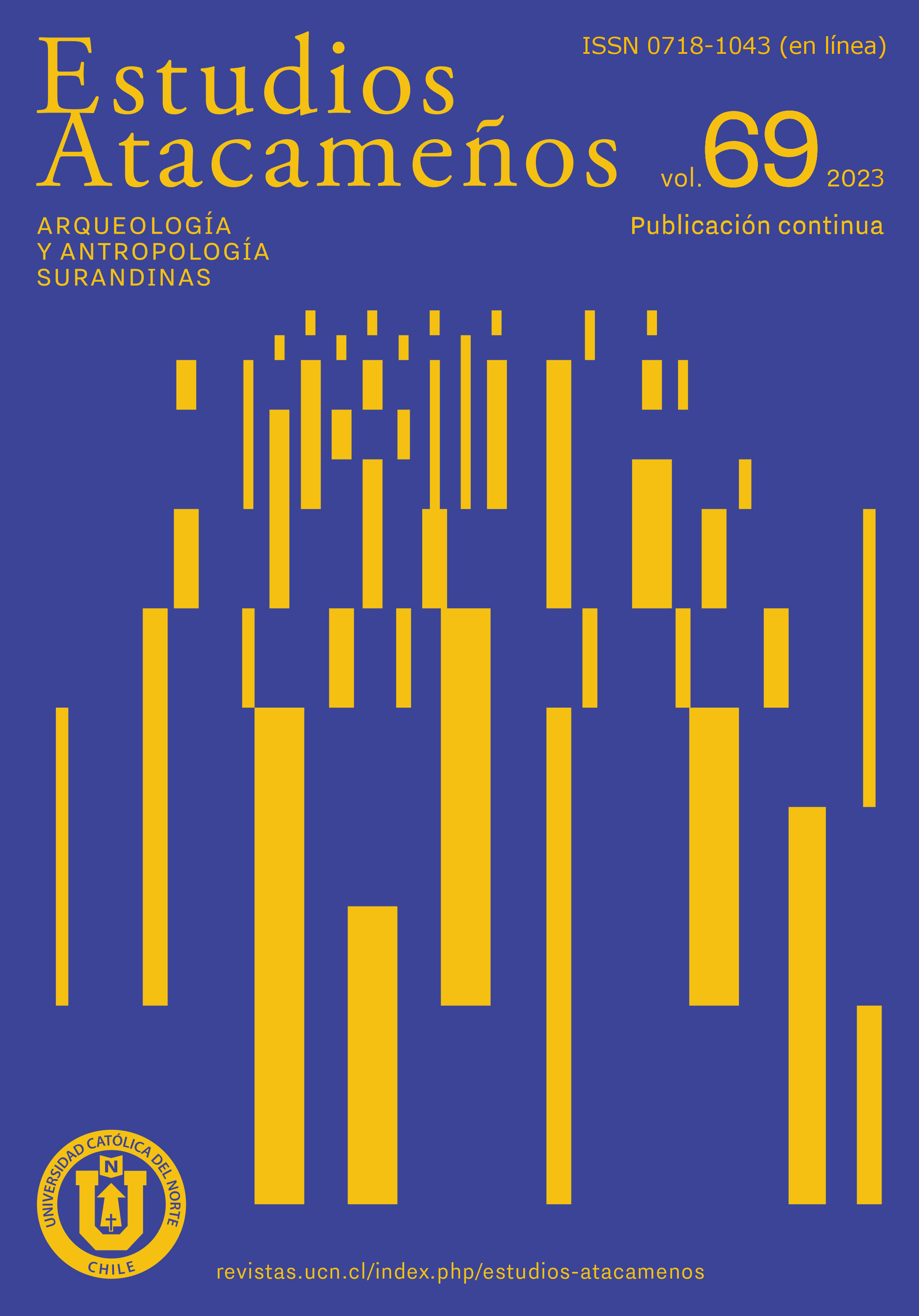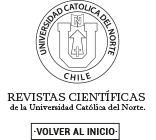The Elementary Structures of the Patriarchy
Feminist Critiques of Alliance Theory
DOI:
https://doi.org/10.22199/issn.0718-1043-2023-0029Keywords:
kinship, anthropology, critical feminism, structuralism, male dominationAbstract
This article reviews Lévi-Strauss’s Alliance Theory based on the feminist critiques of the seventies and current archaeological findings. Its central hypothesis argues that the theory should be understood as a historical product tied to a specific form of masculine domination that became hegemonic in terms of scientific, colonial, and Eurocentric discourse from the nineteenth century onwards. To introduce these arguments, the second section of the article offers a brief glossary of terms on kinship. The third section offers some interpretative reservations to consider when rereading the classics of this anthropological subfield. The fourth explores the analytical assumptions and central hypotheses of Lévi-Straussian theorizing on kinship, and the fifth section synthesizes the current archaeological findings on Paleolithic human groups, an exercise through which we deconstruct several of Lévi-Strauss’s maxims. Finally, the last section concludes by proposing a rereading of Lévi-Straussian theory and discussing the definition of patriarchy in terms of hegemony.
Downloads
References
Bachofen, J.J. (1861). Das Mutterrecht: eine Untersuchung über die Gynaikokratie der alten Welt nach ihrer religiösen und rechtlichen. Natur.
Bird, R.B. y Codding, B.F. (2015). The sexual division of labor. En R. Scott, S. Kosslyn, M. Buchmann (Eds.), Emerging Trends in the Social and Behavioral Sciences: An Interdisciplinary, Searchable, and Linkable Resource (pp. 1-16). John Willey and Sons. https://doi.org/10.1002/9781118900772.etrds0300
Boas, F. (1911). The mind of primitive man. Macmillan.
Bourdieu, P. (2002). Maculine Domination. Stanford University.
Citro, S. (2011). Reflexiones postcoloniales sobre los cuerpos etnográficos. Diálogos con Leenhardt, Merleau-Ponty y Teresa Benítez. Revista de Estudios Anti-Utilitaristas e Pós-Coloniales, 1(2), 53-73.
Clifford, J. (1997). Spatial Practices: Fieldwork, Travel, and the Disciplining of Anthropology. En A. Gupta. y J. Ferguson (Eds.), Anthropological Locations. Boundaries and Grounds of a Field Science (pp. 185−222). University of California. https://doi.org/10.2307/jj.5973134.13
De Beauvoir, S. (2016). La fuerza de las cosas. Random House. https://doi.org/mcfk
De Beauvoir, S. (2018). El segundo sexo. Lumen.
Des Chenes, M. (1997). Locating the Past. En A. Gupta. y J. Ferguson (Eds.), Anthropological Locations. Boundaries and Grounds of a Field Science (pp. 66−85). University of California. https://doi.org/10.2307/jj.5973134.6
Durham, E. (2004). A dinâmica da cultura. Cosac Naify.
Durkheim, É. (2012). La prohibición del incesto y sus orígenes. En El Estado y otros ensayos (pp. 113-171). Eudeba.
Dussel, E. (1994). El encubrimiento del Otro. Hacia el origen del mito de la modernidad. Abya-Yala.
Fabian, J. (2002). Time and the Other: How Anthropology Makes its Object. Columbia University.
Farnell, B. (1999). Moving bodies, acting selves. Annual Review of Anthropology, (28), 341-373. https://doi.org/10.1146/annurev.anthro.28.1.341
Graeber, D. y Wengrow, D. (2021). The dawn of everything: A new history of humanity. Penguin.
Grimson, A. (2019). ¿Qué es el peronismo? Siglo XXI.
Gupta, A. y Ferguson, J. (1997). Discipline and practice: 'The field' as site, method, and location in anthropology. En A. Gupta y J. Ferguson (Eds.), Anthropological locations: Boundaries and grounds of a field science (pp. 1−47). University of California. https://doi.org/mcfm
Haraway, D. (1989). Primate Visions: Gender, Race, and Nature in the World of Moderns Science. Routledge.
Héritier, F. (1996). Masculino/Femenino: el pensamiento de la diferencia. Ariel.
Héritier, F. (2016). Diferencia de sexos. Capital intelectual.
Jackson, M. (1983). Knowledge of the Body. Man, 18(2), 327-345. https://doi.org/bd8h9t
Kirchengast, S. (2014). Human sexual dimorphism-a sex and gender perspective. Anthropologischer Anzeiger, 71(1-2), 123-133. https://doi.org/10.1127/0003-5548/2014/0376
Lamas, M. (2018). División del trabajo, igualdad de género y calidad de vida. En M. Ferreyra (Ed.), El trabajo de cuidados: una cuestión de derechos humanos y políticas públicas (pp. 12−23). ONU-Mujeres.
Lerner. G. (2022). La creación del patriarcado. Paidós.
Lévi-Strauss, C. (1991). Las estructuras elementales del parentesco. Paidós.
Lounsbury, R.B.F. (1962). General and Ethnology. A Review of "Structure and Sentiment: A Test Case in Social Anthropology" by Rodney Needham. American Anthropologist, 64(6), 1308-1309. https://doi.org/10.1525/aa.1962.64.6.02a00150
Macintosh, A. A., Pinhasi, R. y Stock, J. T. (2017). Prehistoric women's manual labor exceeded that of athletes through the first 5500 years of farming in Central Europe. Science Advances, 3(11), 1-13. https://doi.org/10.1126/sciadv.aao3893
MacLennan, J. F. (1865). Primitive Marriage: An Inquiry Into the Origin of the Form of Capture in Marriage Ceremonies. Adam and Charles Black. https://bit.ly/48MxM2y
Mauss, M. (1979). Ensayo sobre los dones. Motivo y forma del cambio en las sociedades primitivas. En M. Mauss, Antropología y Sociología (pp. 155-268). Technos.
Morgan, L. H. (1871). Systems of consanguinity and affinity of the human family. Smithsonian Institution. https://doi.org/10.5962/bhl.title.29577
Needham, R. (1962). The Structure and Sentiment. University of Chicago Press.
Ortner, S. B. (1972). Is female to male as nature is to culture?. Feminist studies, 1(2), 5-31. https://doi.org/10.2307/3177638
Patou-Mathis, M. (2021). El hombre primitivo es también una mujer. Lumen.
Preciado, P. (2021). Manifiesto contrasexual. Anagrama.
Radcliffe-Brown, A. R. (1986). Estructura y función en la Sociedad primitiva. Planeta Agostini.
Reed, S.A. (1998). The politics and poetics of dance. Annual review of anthropology, (27), 503-532. https://doi.org/10.1146/annurev.anthro.27.1.503
Reiter, R.R. (1975). Toward an Anthropology of Women. Monthly Review.
Reynolds, V. (2022). My life with primates. Primates, (63), 559-573. https://doi.org/10.1007/s10329-022-01025-w
Rosaldo, M. Z. (1974). Woman, culture, and society: A Theoretical Overview. En M. Z. Rosaldo. y L. Lamphere (Eds), Woman, culture, and society (pp. 17-42). Stanford University.
Rosaldo, M. Z. y Lamphere, L. (Eds.) (1974). Woman, culture, and society. Stanford University.
Rubin, G. (1975). The Traffic in Women: Notes on the "Political Economy" of Sex. En R.R. Reiter (Ed.), Toward an Anthropology of Women (pp. 157-210). Monthly Review.
Sacks, K. (1979). Sisters and wives: the past and future of sexual equality. University of Illinois.
Said, E. (2004). Orientalismo. Debolsillo.
Segato, R. (2010). Las estructuras elementales de la violencia. Ensayos sobre género entre la antropología, psicoanálisis y los derechos humanos. Prometeo.
Stolcke, V. (2012). De padres, filiaciones y malas memorias. ¿Qué historia de qué antropología?. Revista Pós Ciências Sociais, 5(9/10), 11-62.
Strathern, M. (1990). The Gender of the Gift. University of California.
Todorov, T. (1991). Nosotros y los otros. Reflexiones sobre la diversidad humana. Siglo Veintiuno.
Whiten, A. y Van de Waal, E. (2017). Social learning, culture and the "socio-cultural brain" of human and non-human primates. Neuroscience & Biobehavioral Reviews, (82), 58-75. https://doi.org/10.1016/j.neubiorev.2016.12.018
Woortmann, K. (2003). Lévi-Strauss e a família indesejada. Anuário Antropológico, 28(1), 291-350.
Downloads
Published
Issue
Section
License
Copyright (c) 2024 Menara Guizardi

This work is licensed under a Creative Commons Attribution 4.0 International License.

All works published in Revista Estudios Atacameños (ISSN on line:0718-1043) Revista Estudios Atacameños Creative Commons International 4.0 attribution (CC BY 4.0) licence.
Authors remain the owners of their work and may republish their articles elsewhere without having to request permission, as long as they indicate that the work was originally published in Revista Estudios Atacameños (ISSN on liine:0718-1043).












